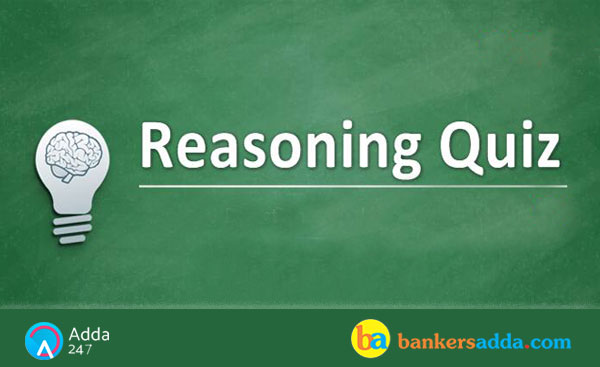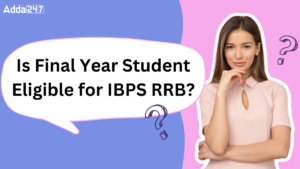Dear Aspirants,

Reasoning Ability is an onerous section. With the increasing complexity of questions, it becomes hard for one to give it the cold shoulder. The only way to make the grade in this particular section in the forthcoming banking exams is to practice continuously with all your heart and soul. And, to let you practice with the best of the latest pattern questions, here is the Adda247 Reasoning Quiz based on the study plan and the exact same pattern of questions that are being asked in the exams.
Direction (1-3): Read the information carefully and answer the questions given below:
Building P is south west of building Q. Building R is south of building S which is north of building P. Distance between T and S is 13m. Distance between building S and P is less than the distance between building P and R. Building D is east of building R. Building P is 12 east of building T.
Q1. Building D is in which direction with respect to building Q?
(a) South
(b) West
(c) Northeast
(d) Cannot be determined
(e) None of these
Q2. What is the shortest distance between building S and P?
(a) 4m
(b) 6m
(c) 5m
(d) 10m
(e) None of these
Q3. Building S is in which direction with respect to building D?
(a) South
(b) Northwest
(c) Northeast
(d) Cannot be determined
(e) None of these
Directions (4-8): Study the following information carefully and answer the given questions.
A word and number arrangement machine when given an input line of words and numbers rearranges them following a particular rule in each step. The following is an illustration of input and rearrangement.
Input- word 28 synthesis 27 light 34 political 66
Step-I: mjhiu word 28 synthesis 27 34 political 12
Step-II: mjhiu qpmjujdbm word 28 synthesis 27 12 7
Step-III: mjhiu qpmjujdbm tzouiftjt word 27 12 7 10
Step-IV: mjhiu qpmjujdbm tzouiftjt xpse 12 7 10 9
Step IV is the last step of given input
Input- unique 46 new 39 like 43 hell 25
Q4. What will be the resultant if third and fourth element from the right end of step II are added?
(a) 35
(b) 45
(c) 54
(d) 32
(e) None of these
Q5. What will be the third step of the given input?
(a) ifmm ofx mjlf unique 25 10 7 12
(b) ofx mjlf ifmm 7 unique 25 10 11
(c) ifmm mjlf ofx unique 10 25 7 11
(d) ifmm mjlf ofx unique 25 10 7 12
(e) None of these
Q6. Which of the following word/number will be at second position from the left end in last step?
(a) 10
(b) ofx
(c) mjlf
(d) vojrvf
(e) None of these
Q7. How many steps are required to rearrange the given input?
(a) six
(b) five
(c) three
(d) four
(e) None of these
Q8. Which of the following element is fifth to the right of ‘ofx’ in IV step?
(a) unique
(b) mjlf
(c) 7
(d) 25
(e) None of these
Directions (9-13): Each of the questions below consists of question and three statements numbered I, II, III given below it. You have to decide whether the data provided in the statements are sufficient to answer the question.
Q9. What will be the day on 15th august of the next year?
(I) 7th March of the next year is Tuesday.
(II) Next year will be a leap year.
(III) Present year is not a leap year.
(a) Only I
(b) Only I and II
(c) Only I and III
(d) All I, II & III
(e) Data inadequate
Q10. How many sons does S have?
(I) A’s father R is a husband of S.
(II) Out of the three children of R, only one is a girl.
(III) R and B are brother of A.
(a) Only I and III
(b) All I, II & III
(c)Only II &III
(d)Data inadequate
(e)Only I and II
Q11. How is ‘bold’ written in a code language?
(I) ‘Copper hear nominal well ‘is written as ‘Xz Ix Nq Zi’ in that code language .
(II) ‘you come well copper’ is written as ‘Ji Ix Xz Zi’ in that code language .
(III) ‘well bold copper hear nominal’ is written as ‘Nq Mu Ix Zi Xz ‘ in that code language.
(a)Only I &II
(b)Only II &III
(c) Only I & III
(d)Data inadequate
(e) All are required
Q12. Who among A, B, C, D, E and F is the tallest?
(I) Only two of them are taller than C.
(II) D is shorter than F.
(III) C is taller than A but shorter than F and B.
(a) Only I and II
(b) Only II and III
(c) Only I and III
(d) Data inadequate
(e) All are required
Q13. What is the direction of village P with respect to village W?
(I) Village P is to the east of village A and to the south of village B.
(II) Village X is to the south of village P and village W is 2m away from village X.
(III) Village M is to the north east of village P and W is to the east of village X.
(a) Only III
(b) Only I and II
(c) Only II and III
(d) Question cannot be answered even with all I, II & III
(e) None of these
Directions (14-15): In these questions, relationship between different elements is shown in the statements. These statements are followed by two conclusions. Mark answer
(a) if only conclusion I is true.
(b) if only conclusion II is true.
(c) if either conclusion I or II is true.
(d) if neither conclusion I nor II is true.
(e) if both conclusion I and II are true.
Q14. Statements: A>B,D≤E,C≥F=G,B≤C=D
Conclusions: I.B≥G II.E≥G
Q15. Statements: T>S≤Q,T≥U=V,H≥T
Conclusions: I.U≤H II.S<H
You may also like to read:





 GA Capsule for SBI Clerk Mains 2025, Dow...
GA Capsule for SBI Clerk Mains 2025, Dow...
 The Hindu Review October 2022: Download ...
The Hindu Review October 2022: Download ...
 Is Final Year Student Eligible for IBPS ...
Is Final Year Student Eligible for IBPS ...





